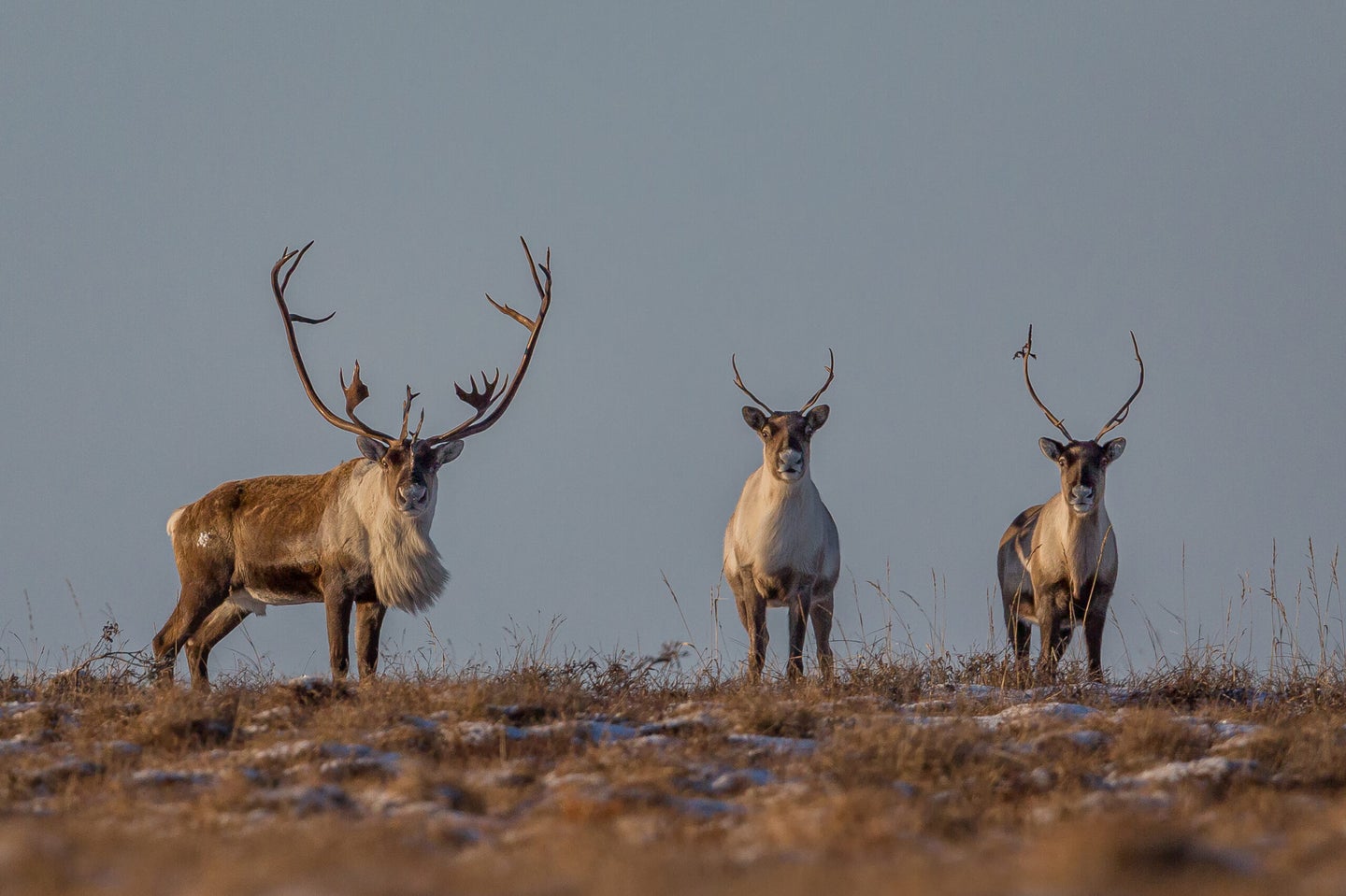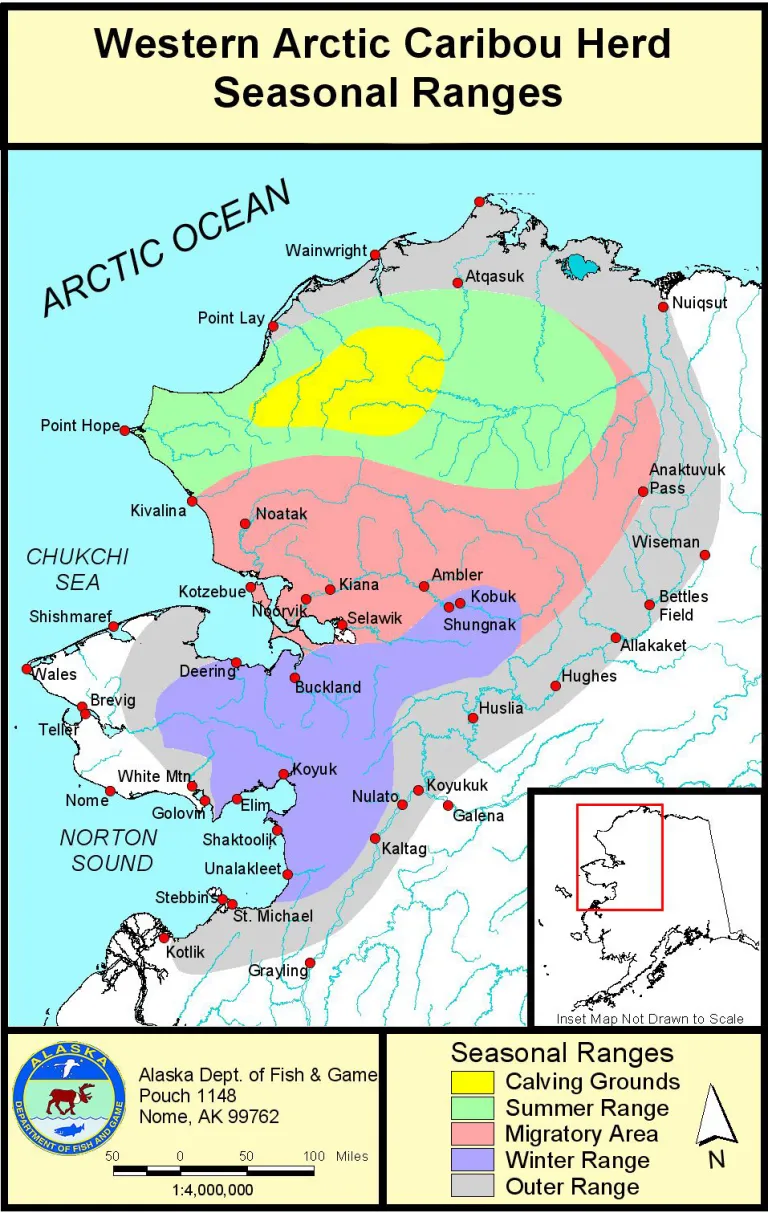
Late last month, the Alaska Board of Game voted to substantially reduce harvest numbers for the Western Arctic Caribou Herd. The move will limit non-resident bull caribou tags, previously available over the counter, to a limited entry draw. The new non-resident draw system—which allots up to 300 Western Arctic bull tags per year—won’t be implemented until 2025. In order to hunt the upcoming season, non-residents will need to apply for permits between November 1 and December 15, 2024.
The new regulations also reduce resident harvest from five caribou per day to 15 per year, only one of which may be a cow. For Alaska residents, the new rules take effect in July of this year. The management shift will only apply to state lands in the Northwest Arctic centered around the regional hub of Kotzebue.

The reduced bag limits are an effort to address eyebrow-raising declines in Alaska’s largest caribou herd, which has dropped by more than 300,000 animals over the last two decades. “A reduction in cow harvest is the single most important thing we can do to help the Western Arctic Caribou Herd,” ADFG wildlife biologist Alex Hansen told the Anchorage Daily News earlier this month.
The latest estimates, based on photographic aerial surveys, put the herd at approximately 152,000 animals. At its 2003 peak, it was nearly 500,000 caribou strong. Herd numbers have swung widely over the last 50 years, hitting a low of 75,000 caribou in 1976, then rebounding after hunting restrictions were put in place, according to reporting from Alaska Public Media.
What’s Causing the Decline?
“The reasons why the Western Arctic Herd is in decline are numerous and complicated,” Theodore Roosevelt Conservation Partnership (TRCP) Senior Program Manager Jen Leahy tells Field & Stream. “Climate change, predation, hunting pressure, and unsustainable levels of cow harvest are all contributing—and some of those things are outside of our control.”
Leahy, who lives in Anchorage, says the ongoing fall in Western Arctic caribou numbers, and the recent tag reductions those declines have brought on, underscore a pressing need for hunters across the country to get involved in Alaska’s caribou conservation efforts. “Research demonstrates that industrial development and human activity can negatively influence caribou behavior and migratory patterns,” she says. “We want to do everything we can to help this herd rebound as quickly as possible. Choosing if or where we build new industrial development projects in their home range is one of the factors that is within our realm of control.”
One such development proposal, which Leahy and TRCP are working hard to oppose, is the Ambler Road project—a 211-mile industrial mining road that would bisect the Western Arctic Caribou Herd’s ancient migration paths. Should the project be approved by the Bureau of Land Management later this year, Leahy says, it could seriously disrupt the way that caribou move about the landscape. For an example of what could happen, she pointed to an existing mine road about 80 miles north of Kotzebue.
“The nearby Red Dog Mine access road has impacted caribou migration,” she says. “In one study, about one-quarter of the caribou that came within 30 miles of that road were delayed or deflected. That may not sound like a huge impact, but for a herd of this size, it means that tens of thousands of caribou—and all the people who rely on those caribou—have been impacted by that industrial road in some years. Are those acceptable impacts? That’s the question we should be asking for each new proposal.”
If constructed, the Ambler Road—which would provide international mining companies access to undeveloped mineral deposits in the central Brooks Range—would be approximately four times the length of the 52-mile Red Dog Mine Road. The BLM has been analyzing the potential impacts of the proposed Ambler Road and plans to issue a permitting decision later this year.
Read Next: Hunters and Anglers Speak Out Against Proposed Industrial Road Through Alaska’s Famed Brooks Range
Negative impacts to caribou herds are just one of several red flags being raised by sportsmen and women who oppose the Ambler Road. The project would also introduce thousands of culverts the the area’s wild rivers—famous for salmon, trout, and sheefish. And it would carve up wetlands critical for the pintail ducks, greater white-fronted geese, and tundra swans that summer in the Brooks Range. The BLM closed its official public comment period on the proposed Ambler Road earlier this winter, but hunters and anglers can still provide input at this link.
The post Alaska Fish & Game to Reduce Caribou Tags Amid Continued Herd Decline appeared first on Field & Stream.
Articles may contain affiliate links which enable us to share in the revenue of any purchases made.